Discover consuming insects’ environmental advantages and nutritional worth. The science of entomophagy, nutritional profiles of insects, and their possible solutions for world food shortages are covered in this paper.
Table of Contents
- Nutritional Benefits of Insects
- Sustainability of Insect Farming
- Cultural Perspectives on Eating Insects
- Preparing Insects for Consumption
- Extra’s:
Nutritional Benefits of Insects
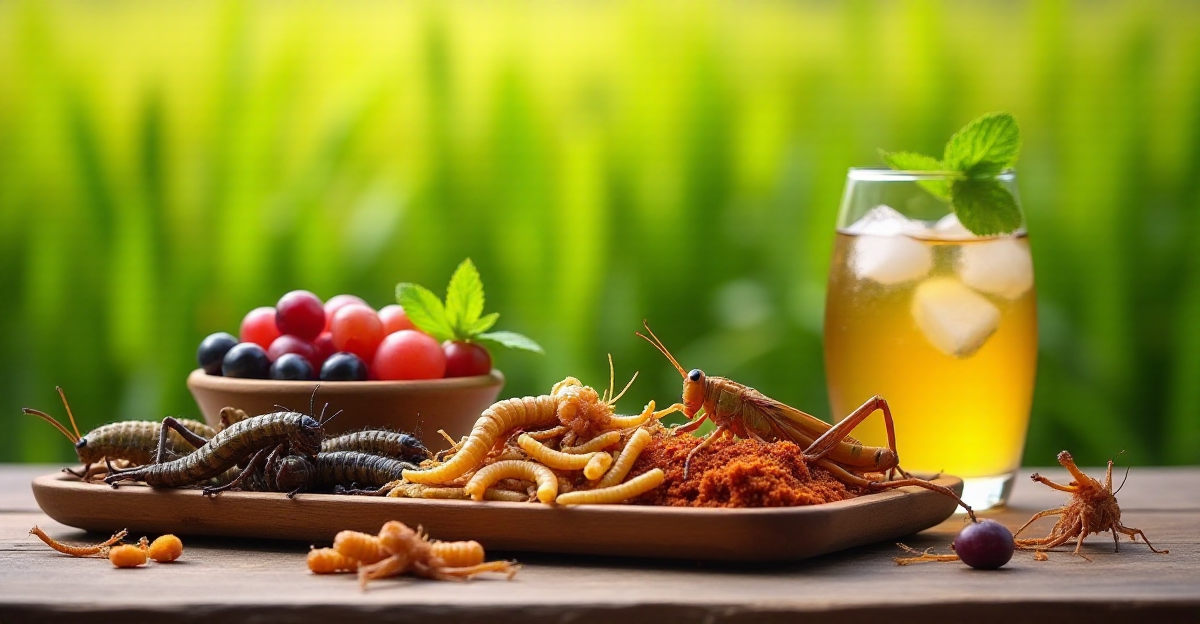
Have you ever given thought to include insects in your diet? Though it may sound strange, entomophagy—eating insects—is a regular habit in many different countries. People have delighted in insects for millennia as a sustainable and nouraging food source.
Insects are loaded with vital nutrients that benefit you, did you know? Comparable to conventional protein sources like meat, insects are a wonderful source of insect protein. Additionally providing vital dietary fiber for digestion and blood sugar control are they Vitamins and minerals abound in insects; among them are vitamin B12, iron, zinc, and magnesium, all of which are vital for immune system function, energy generation, and bone strength. For instance, crickets are a great complement to any diet since they are well-known to have great concentrations of zinc, iron, and protein.
Apart from their dietary worth, insects are a sustainable food source with a rather low environmental impact when compared to cattle. For anyone worried about the sustainable agriculture and the direction food is headed, this qualifies as a wise choice. Insects can help us satisfy food needs as the world’s population rises and demand grows, so preserving our planet.
Why Insects Are a Future Food
As a sustainable and wholesome approach to satisfy the demands of a rising world population, future foods are getting more and more appealing. Often produced from unconventional sources—such as insects, algae, and plant-based proteins—these foods are low in environmental impact yet have great nutritional value.
Eating insects has really major environmental advantages. Growing animals fuels water pollution, greenhouse gas emissions, and deforestation. Conversely, insects are a more ecologically friendly choice since they need much less area, water, and food to grow.
For the earth and our health, insects offer great and nouraging nourishment. Therefore, keep in mind sampling insects the next time you’re searching for a healthy and environmentally friendly snack. Your enjoyment of them might astounds you!
Sustainability of Insect Farming
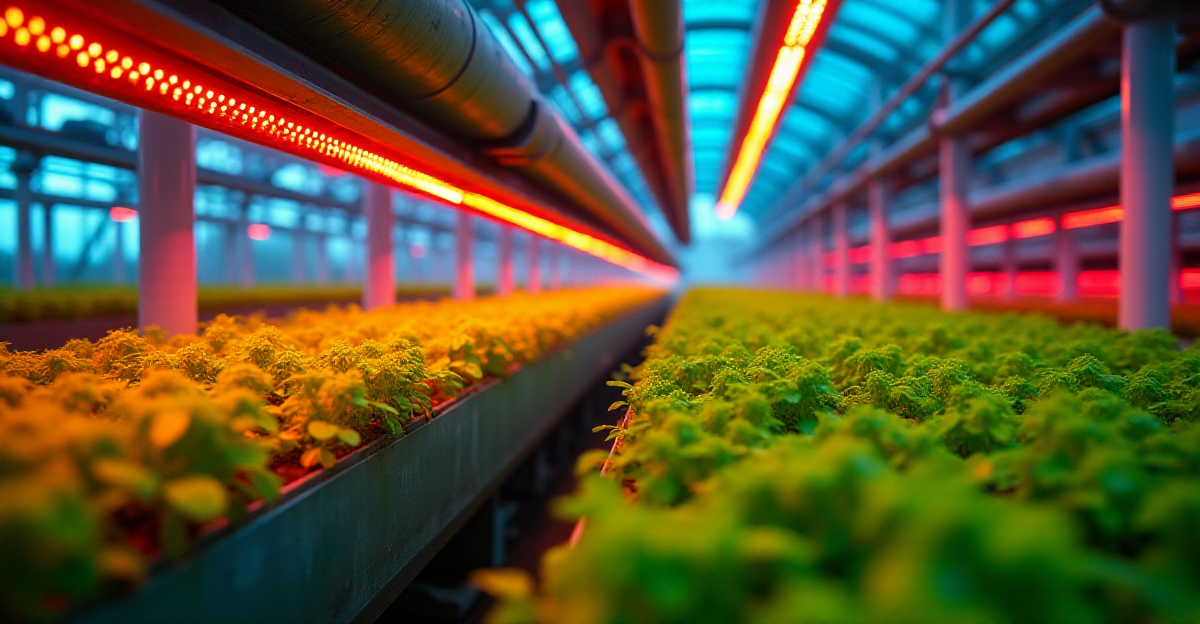
Have you given eating insects any thought? Though it sounds strange, entomophagy, or eating insects, is growingly popular all around. Explain why. Since it’s a sustainable and tasty approach to feed our rising population.
Imagine a food chain in which the priceless resources of our earth are not depleted. Insect farming offers this promise. We could raise insects rather than pigs, cows, or chickens. Surprisingly rich in protein, fiber, and vital minerals and vitamins, these small organisms are Still, the advantages of insect farming stretch much beyond our palates. Let’s explore the amazing world of growing insects for food and learn why it’s a revolution for our earth.
A Sustainable Food System
One effective approach to establish a more environmentally friendly food chain is insect farming. Insects need far less water and land than conventional animals. Raising crickets rather than cows, for instance, is significantly more efficient. To provide the same level of protein, crickets require 12 times less food than cows; their water footprint is also far smaller. This is absolutely vital, particularly given that around 70% of world freshwater withdrawals are related to agriculture.
Regarding the effects on the surroundings, what more? Consider the cow’s greenhouse gas output. Good news for our climate is insects generate significantly less. Additionally, they generate a lot of manure, which could find application as fertilizer. Imagine a time when we might design a circular food chain to maximize resources and reduce waste.
Some individuals would be worried about how conventional cattle affect our woodlands. Deforestation and habitat loss follow from the demand for livestock feed. By encouraging a more sustainable future, insect farming might help to lessen our reliance on these methods.
More Than Just a Sustainable Option
Additionally beneficial for our communities and economies are raising insects for food. Insect farming can vary agricultural methods, generate employment in rural communities, and give farmers substitute revenue streams. Insects can provide a much-needed supply of nourishment in some areas of the globe where conventional protein sources are few or costly.
You may be asking, Will insect farming really make a difference? Think about this: population of the planet is fast rising. We will have to generate seventy percent more food than we do currently by 2025. One big component of the answer could be insect farming.
Imagine a time when we are tending to our earth as well as feeding ourselves. One of the most effective tools for building a more robust and sustainable food supply is insect farming It’s time to welcome the ability of small organisms and explore a universe of opportunities!
Should you be interested in insect farming, there are several avenues of learning. Visit a nearby bug farm, study insect recipes, or join a group committed to advancing environmentally friendly cuisine. Accepting this creative approach would help us to build a better future for next generations as well as for ourselves.
Cultural Perspectives on Eating Insects
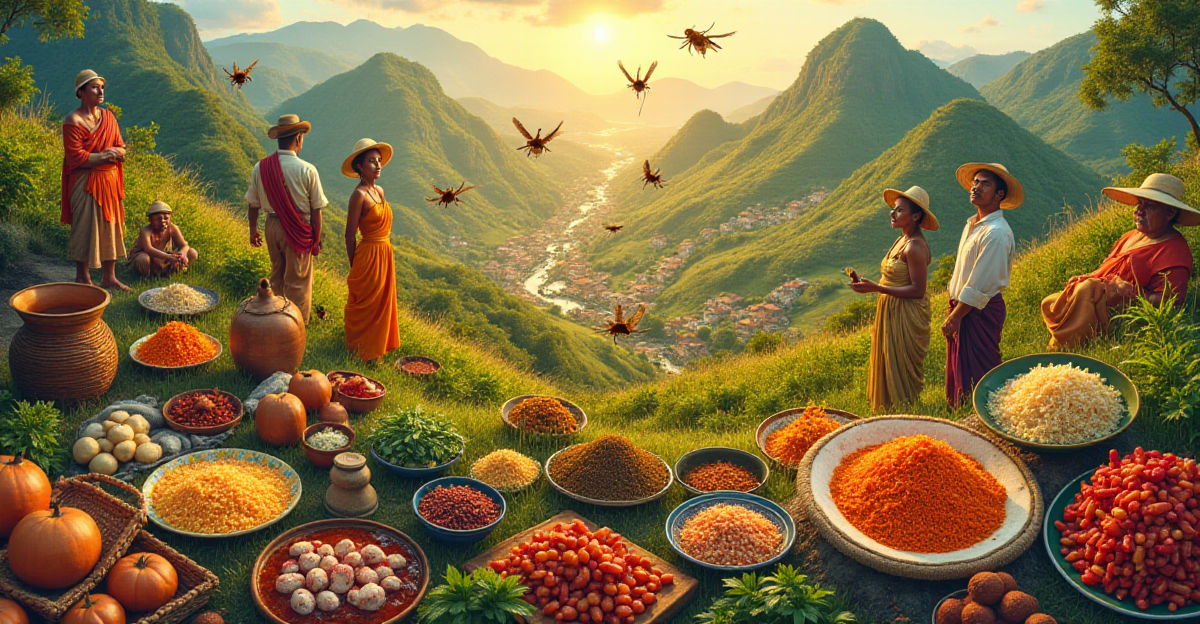
Ever gave insect protein some thought? Though it seems unusual, many civilizations have long-standing custom of eating insects, sometimes referred to as entomophagy. Although some might find the concept unattractive, entomophagy is becoming more and more popular as a sustainable food source because of its variety of insect nutrition. Examining the rich history, cultural relevance, and culinary customs of entomophagy can help us to investigate the several cultural viewpoints around it.
A Global History of Eating Insects
Many civilizations have long-standing culinary customs including insects. For millennia they have been eaten. Early humans ate mostly insects since they supplied vital nutrients needed for life. Evidence points to indigenous people on many continents—including Asia, Africa, Australia, and the Americas—engaging in entomophagy. In Mexico, for instance, tacos often use grasshoppers, sometimes known as chapulines, as a snack or ingredient. A crunchy and flavorful street meal found in Thailand are crickets. It may surprise you to see that many civilizations nowadays still rely heavily on insects for their traditional meals. Reflecting a strong bond to the natural world and local customs, entomophagy is connected in many areas with particular festivals, celebrations, or religious rituals.
The Rise of Insect Consumption in Western Cultures
Growing environmental issues about the effects of conventional food production worry the globe. Entomophagy is thus becoming more and more interesting as a sustainable and nouraging substitute. Growing awareness of the environmental advantages of entomophagy is driving Western civilizations’ growing curiosity in insect protein. Chefs and entrepreneurs are investigating creative approaches to use insects into Western cuisine. For example, gourmet meals, wheat, nutrition bars, and edible insects find employment in In Western societies, the view of consuming edible insects is changing progressively. Media coverage and advocacy groups are questioning conventional wisdom and supporting research of this food source by bringing attention on the environmental and nutritional advantages of insects.
The scene of cuisine is changing to welcome this unusual food source. Achieving food security and guaranteeing a sustainable future for food production depend much on insect farming. Globally, future foods like edible insects are starting to take front stage. Food’s future may just be humming with opportunities.
Preparing Insects for Consumption
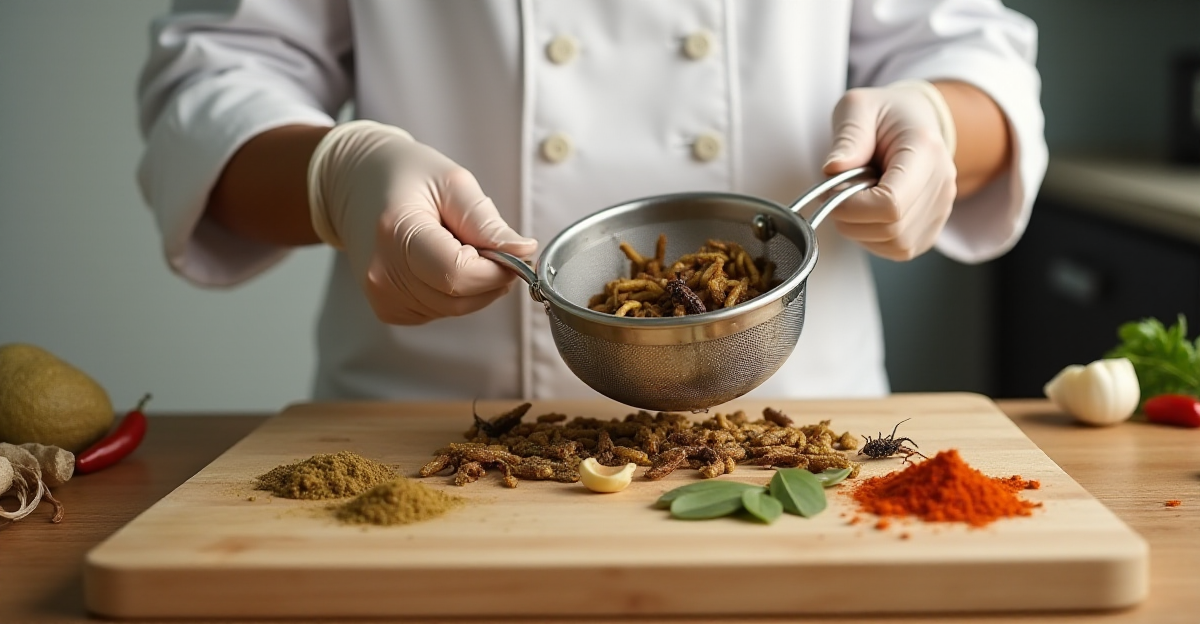
Have you given insects any thought as a dietary addition? Though it sounds strange, entomophagy, the habit of eating insects, is becoming more and more popular all around. For what? Since edible insects are a sustainable and nouraging food source. A good and environmentally sustainable substitute for conventional meat, they are loaded with protein, fiber, and important minerals and vitamins. But let’s learn how to get these small creatures ready for eating before diving into this amazing gastronomic universe.
Cleaning and Preparation
Making edible insects calls for a few measures to guarantee they are both safe and appetizing, much as any other component. One should start by giving them complete cleaning. Under running water, rinse them to eliminate any additional components, dirt, or trash. Certain insects, such as mealworms or crickets, may need you to cut off their legs and heads. This not only enhances the taste but also helps avoid a bitter one.
You ready to boil your insects after cleaning? Many techniques of cooking them produce different taste and texture qualities. You might fry, roast, bake, or even dry them, for instance. Fried insects appeal to me personally as their crispy outside looks great. Herbs and spices will help you to improve the taste by themselves. For a hot snack, my usual recipe calls for fried grasshoppers topped with chili powder and garlic. This is a wonderful and filling treat. Try oven roasting your insects if you taste better savory. Low temperature baking insects produces a soft and delicate texture. One classic approach to help them last more is drying.
Certain insects can even be further processed—that is, ground into flour—after cooking. From pancakes and cookies to breads and even protein bars, insect flour is astonishingly flexible and fit for many recipes.
Safety Precautions
One should consider the safety issue of cooking edible insects. Like with every other food, their safety for ingestion depends on careful handling.
Finding your insects from reliable vendors who raise them in hygienic, under control conditions is very important. Insects can transport germs or parasites, hence this is significant. Choose edible insects from reliable suppliers that give hygienic and safety first importance.
Freezing your insects before cooking is another really vital step. This helps eliminate any possible infections they could be transporting. You’re fine to go after just a few hours of simple freezing them.
The insects must be safe to eat, hence thorough cooking is very necessary. Before savoring them, make sure they are cooked completely.
Nutritional Benefits of Insects
Not only a sustainable food supply, edible insects are also quite nutritious. They are a good addition to your diet since they abound in vital minerals.
Their great protein content is one of the most obvious advantages. For vegans or those searching for a boost in protein, several insects provide a similar level as meat.
Additionally quite good sources of fiber, which is crucial for digestive health are they. Important vitamins and minerals abound in insects as well; iron, zinc, and vitamin B12 among others.
With this book, hopefully, you will be motivated to investigate the intriguing realm of edible insects. They are a wonderful, healthy, sustainable food source. Following these easy guidelines for cooking and preparation of edible insects will help you to savor the several advantages of this unusual food source. You might even come upon a fresh favorite snack!
Extra’s:
If you’re fascinated by the hidden world of nature, you might be interested in exploring the intricate mechanisms behind bioluminescence, a phenomenon that illuminates the darkness with dazzling displays of light. “Explore the Mysteries of Bioluminescence in Nature” delves into the science behind this captivating natural phenomenon, revealing the diverse ways in which organisms harness chemical reactions to create light.
The environmental impact of our food choices is a critical concern, and insect farming presents a compelling alternative to traditional livestock production. “The environmental sustainability of insects as food and feed. A review — Research@WUR” explores the ecological benefits of insect-based diets, highlighting their potential to reduce greenhouse gas emissions, conserve water resources, and improve land use efficiency. This comprehensive review provides a thorough analysis of the scientific evidence supporting the sustainability of insects as a food source.

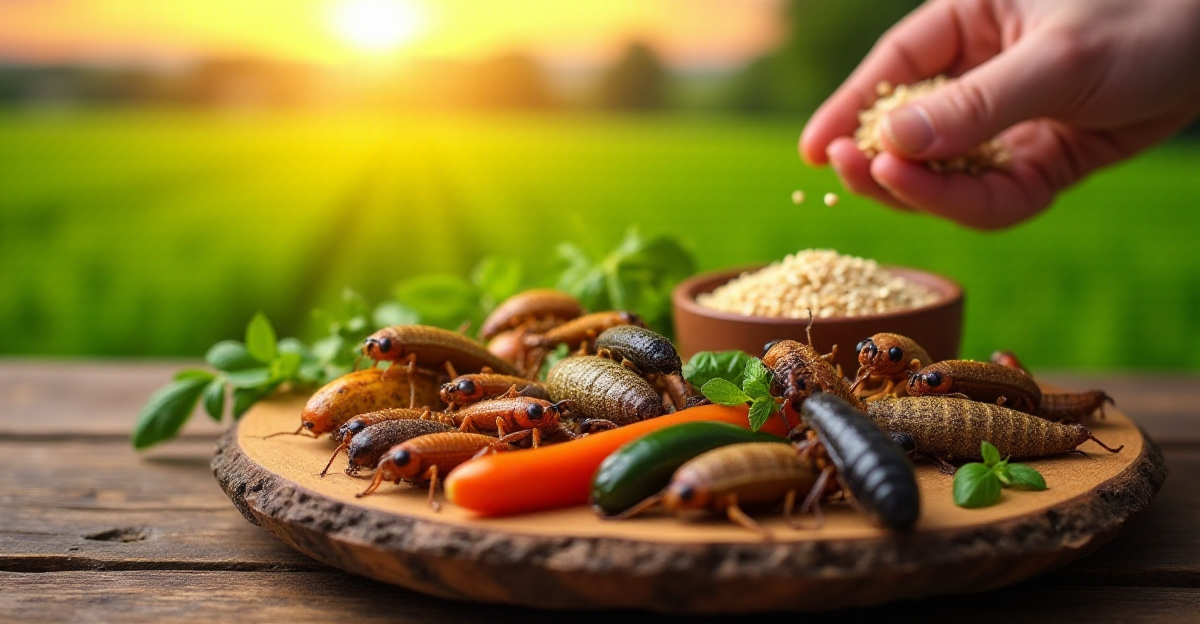










2 thoughts on “The Science Behind Edible Insects: Nutrition and Sustainability”